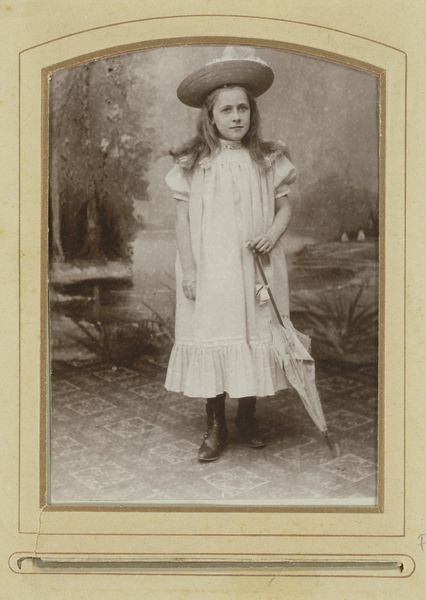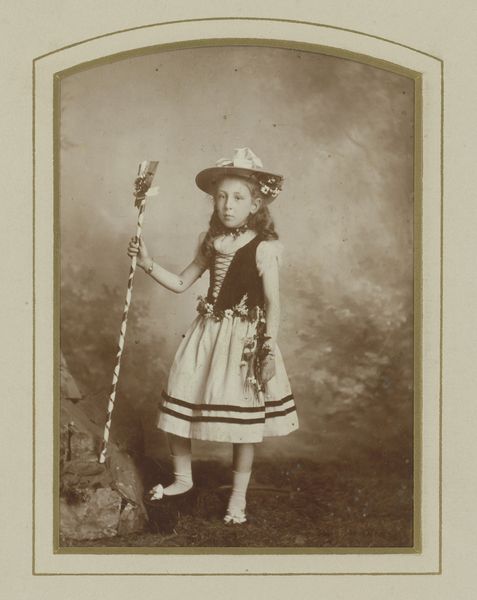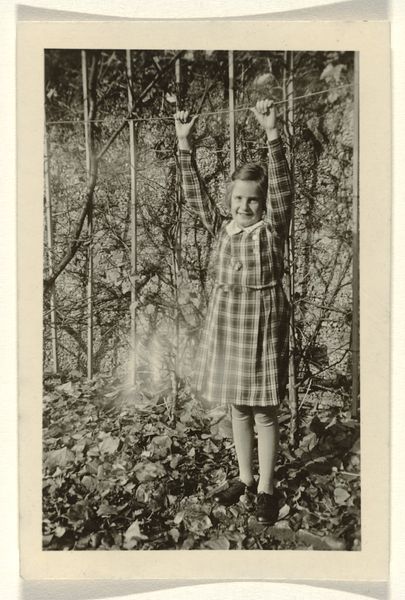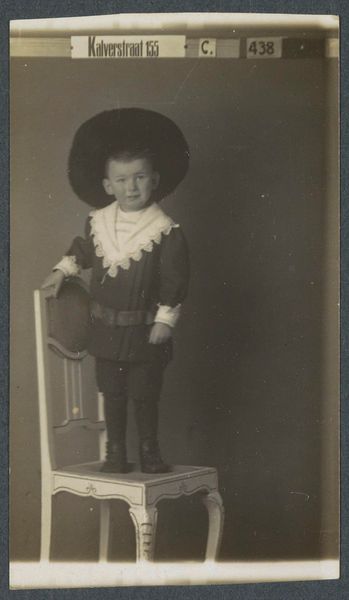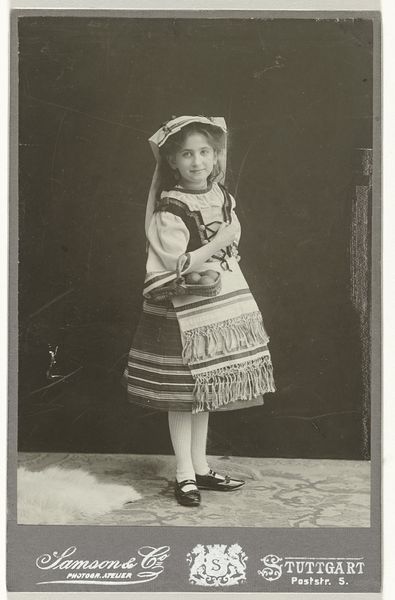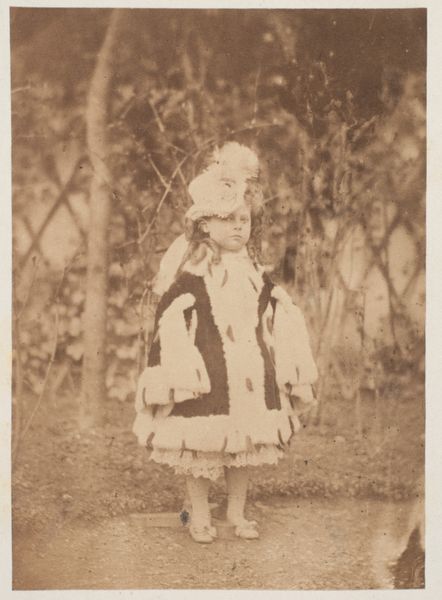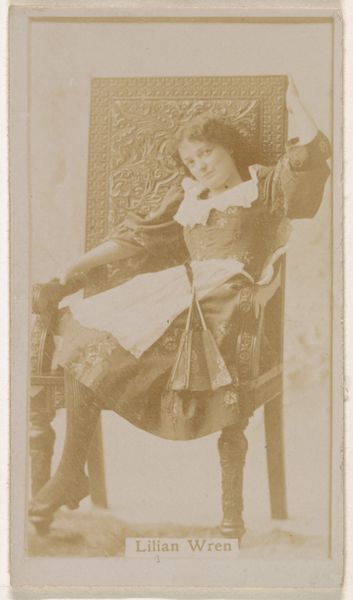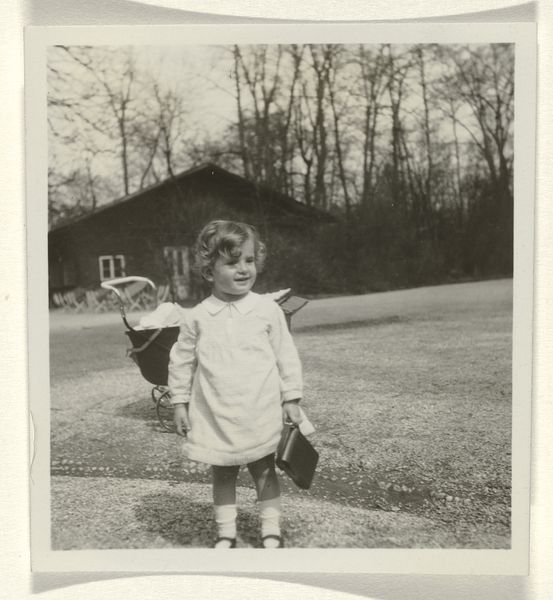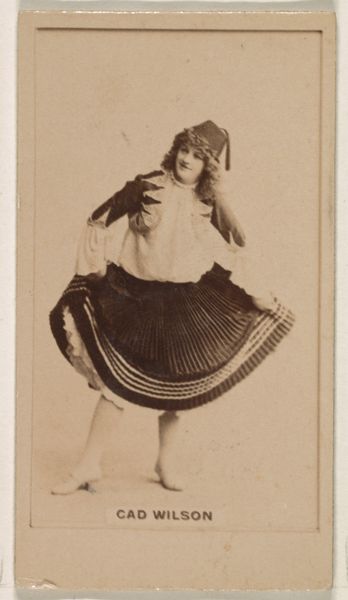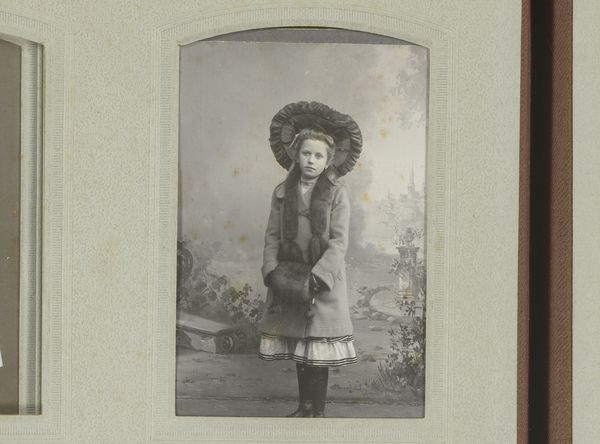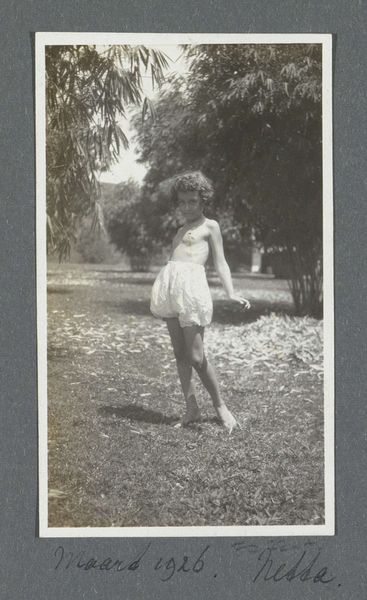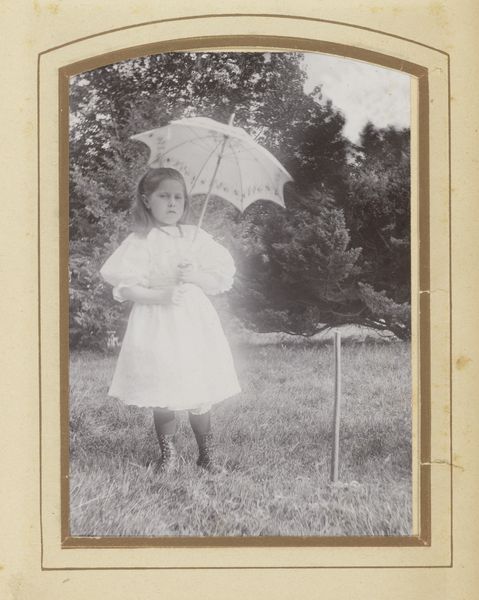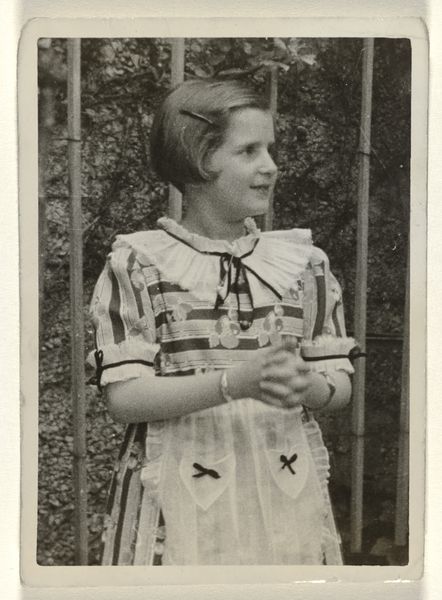
Marba Titzenthaler, dochter van de fotograaf, staand voor een bos Possibly 1917
0:00
0:00
Dimensions: height 89 mm, width 57 mm, height 97 mm, width 60 mm
Copyright: Rijks Museum: Open Domain
Curator: It’s remarkably intimate, isn’t it? Such directness from a photograph taken, possibly, in 1917. This gelatin-silver print, entitled "Marba Titzenthaler, dochter van de fotograaf, staand voor een bos", is believed to be the work of Waldemar Titzenthaler. Editor: There’s something dreamlike about it. That wide-brimmed straw hat, the little purse...It feels like a staged memory. Melancholy, almost. The high contrast and soft focus push her out of any concrete reality. Curator: Waldemar Titzenthaler was, in his time, a champion of art photography—rejecting straightforward pictorialism for something… more. He uses familiar symbolic tropes in his pictures to elicit specific sentiments. It seems that with her hat, apron dress, and purse, little Marba could represent youthful innocence. Editor: Do you think the background forest reinforces this? Framing her in the perceived ‘mystery’ of the Black Forest, for instance? And photography always has that strange power to conjure loss… Curator: Precisely. Consider the context; World War I would have been raging. This photograph then isn’t just of a little girl; it's of hope and fragile life, consciously preserved through a relatively new, but rapidly developing medium. We tend to view portraiture through rose-tinted glasses. Editor: It's true; the public role of images was under enormous transformation at that point in time. And isn't it revealing how staged even snapshots become? Is it really memory or a cultural reconstruction? Curator: Precisely. Though there may be debates surrounding the level of manipulation here, such discussions are useful for considering art’s continued resonance today. Editor: A perfectly crystallised moment ripe for deeper study. Curator: Agreed, this image allows an enriching contemplation.
Comments
No comments
Be the first to comment and join the conversation on the ultimate creative platform.
